
People afflicted with celiac disease or gluten intolerance are often underweight because their condition interferes with their ability to absorb calories and nutrients. A gluten-free diet is the only way to treat celiac symptoms, and usually brings about weight gain as the villi in the intestines heal. However, sometimes people fail to gain weight on a gluten-free diet because they excessively restrict foods—especially calorie-rich carbohydrates. Many healthy, calorie-dense foods are available to those following a gluten-free diet so that they can gain weight.
Step 1
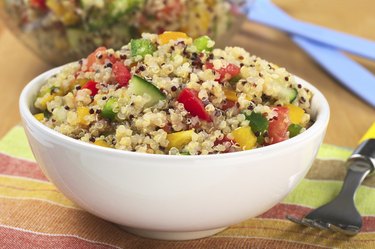
Increase the amount of alternative grains in your diet. Try quinoa, brown rice, amaranth, buckwheat and millet for side dishes. Flavor them with chopped onion, garlic, herbs or cook them in chicken broth to offer more flavor. Have an extra serving or two at dinner to increase caloric intake.
Video of the Day
Step 2
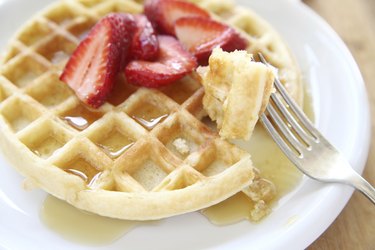
Purchase breads, pasta, waffles and cereals made from gluten-free grains. Toast gluten-free bread to make it more palatable, and use calorie-dense nut butter as a spread. Try brown rice or quinoa pasta with your favorite marinara sauce. Enjoy corn or brown rice waffles with plain yogurt, berries and honey. Eat extra servings of cereals like gluten-free granola, crunchy rice and quinoa flakes.
Step 3
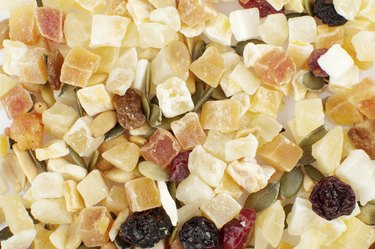
Snack on nuts and dried fruits like dates, apricots and raisins. Choose these gluten-free items that provide substantial nutrition and high calories in small servings.
Step 4
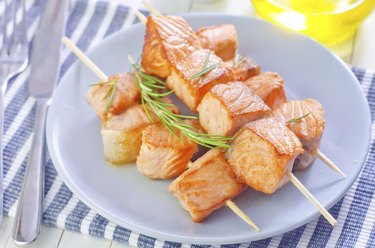
Up your consumption of monounsaturated fats to ingest more calories with minimal health consequences. Minimize consuming saturated fat from sources like fatty cuts of beef and full-fat dairy products to avoid increasing your risk of heart disease. Stay away from processed products that contain a lot of trans fats -- many of these are off-limits anyway because they contain gluten. Choose cold-water fish like salmon and tuna for protein sources as they contain heart-healthy fats. Add calorie-dense avocados and olive oil to sandwiches and salads. Toss your gluten-free grains in an olive-oil based dressing to make a side salad with extra fat and calories.
Step 5
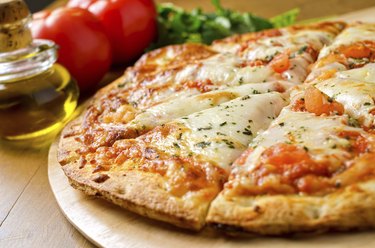
Do not feel like all your favorite foods are suddenly off-limits. Seek out gluten-free options of your favorite foods, like pizza with whole-grain crust and whole-grain crackers. Look for the many recipes available online. Sample gluten-free breads, whole-grain pastas and waffles -- many taste as good as the wheat-based versions. Check your local store for these products -- most mainstream grocers, as well as health food stores, carry multiple gluten-free products in special sections.
Things You'll Need
Quinoa
Buckwheat
Millet
Brown rice
Gluten-free bread, waffles and cereals
Nuts
Dried fruits
Avocados
Fatty fish
Olive oil
Tip
After you have achieved a healthy weight, be sure to watch your caloric intake. It can be easy to gain weight while on this diet because many of the gluten-free breads and snacks are more calorie dense than those made with wheat flour. Do not use your gluten-free diet as an excuse to eat an unbalanced diet -- whole grains -- gluten-free of course -- vegetables and lean proteins should still form the bulk of your diet.
Warning
If you are not seeing a resolution in your symptoms despite following a gluten-free diet, check with your doctor. You might still be getting gluten in your diet through cross-contamination, or you could have another underlying health issue. Be careful when eating out in restaurants -- be sure your server and the kitchen staff understand the severity of your condition and that they don’t fry your gluten-free fries in the same oil as the bread-coated chicken nuggets or boil your gluten-free pasta in the same water as wheat pasta.
Gluten-free breads and cereals are not usually fortified with vitamins like regular bread. When you switch over to gluten-free products you may be losing out on fortified vitamins such as vitamin D and B vitamins. Speak to your doctor about whether or not you should increase your intake of these vitamins.
Video of the Day